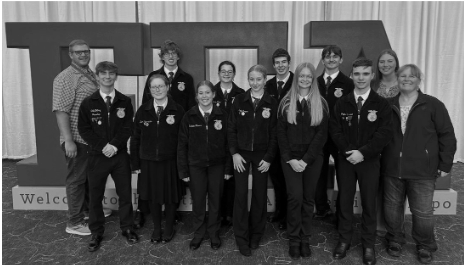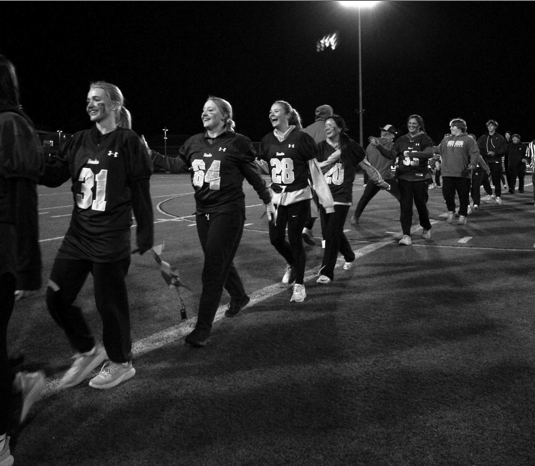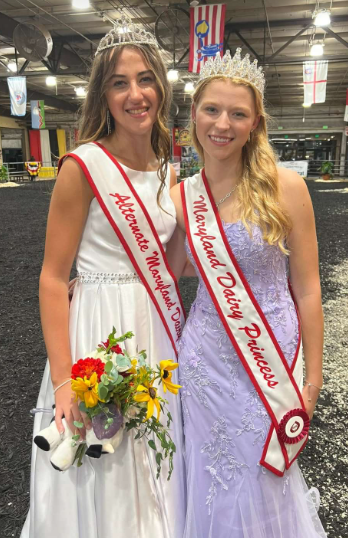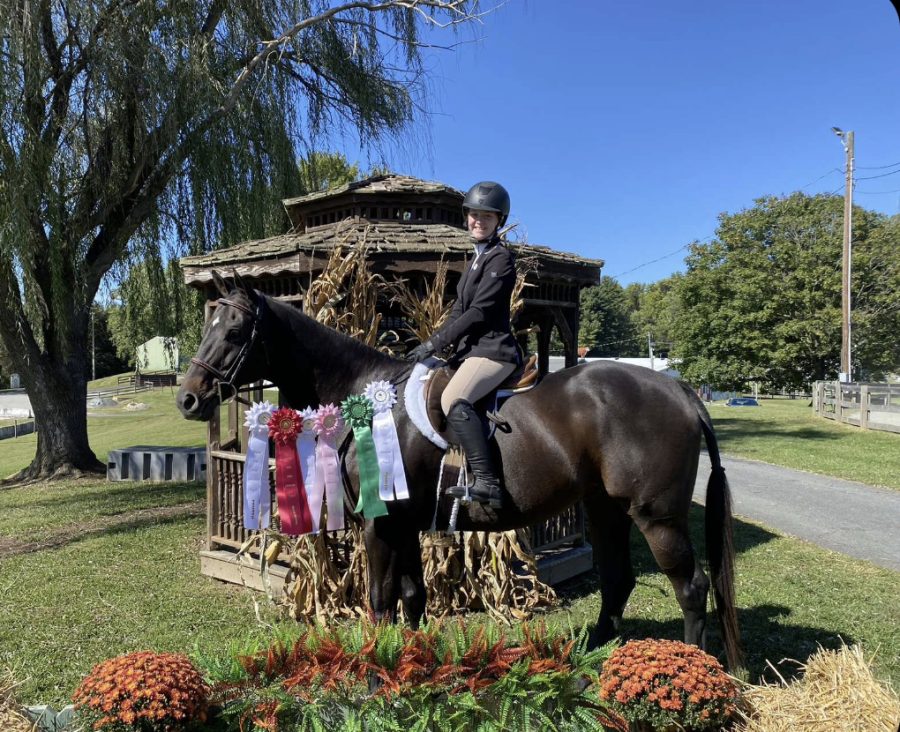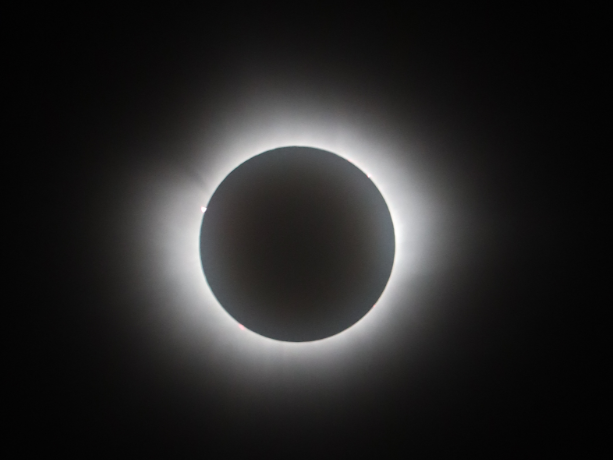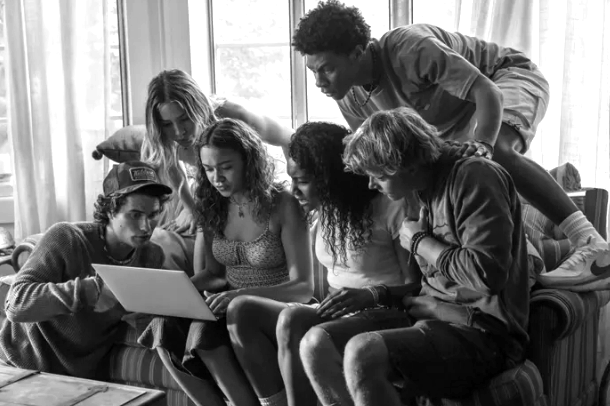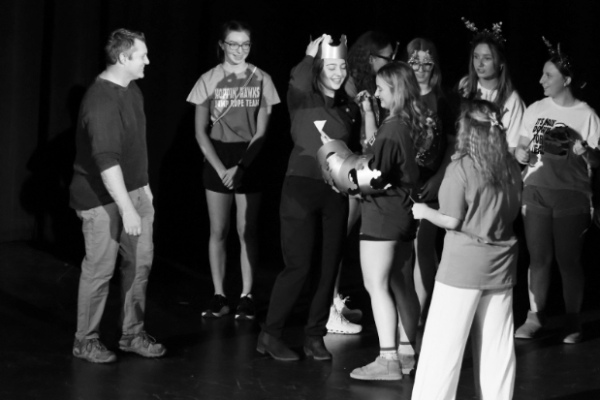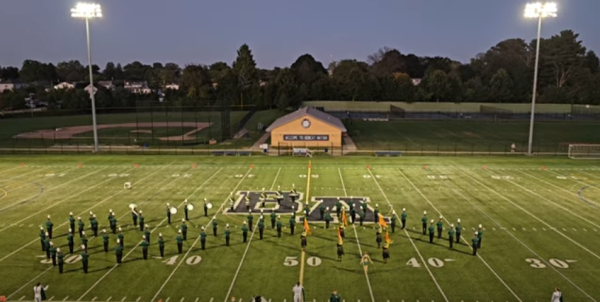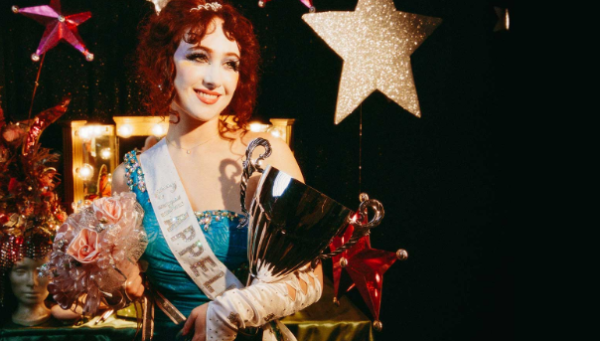Save the trees! Hawks plant chestnut grove
Many students have been noticing the new trees that have been planted on the hillside next to the football stadium. There are 50 new baby trees and they are chestnut trees, which have been becoming more and more uncommon. This is the work of Mrs. Laura O’leary’s wildlife classes, Ms. Erika Edward’s plant science classes, Mr. Nathan Glenn’s and Mr. Doug Heeter’s classes, and Mrs. Kim harris’s biology students. The planting took place on Earth day April, 22.
North Harford high school was selected by the American Chestnut Foundation and the Harford County Forestry Board to become the stewards of an experimental American Chestnut grove. “The American Chestnut foundation started a program where they wanted to try to start growing these experimental chestnut trees on public lands because that would give them the ability to look into how they are growing, and to gather data on a particular variety of mother trees that they were using to make this strand of american chestnut blight resistant,” O’leary explains.
This is because in the past our forests were dominated with chestnut trees, but nowadays that’s no longer the case. “A blight, invasive fungus came over and killed off our American Chestnut trees in really little to no time so, our forests are no longer dominated with chestnut trees,” O’leary says.
“I’m always looking for projects for kids to have ways to be able to collect data. That’s what our magnet is all about, and I also do that in a lot of my regular environment science classes,” O’leary says to why she took this opportunity when she was offered the trees by the Harford County Forestry Board. Another school that was given this opportunity is C. Milton Wright.
In order to obtain the trees the students in O’leary’s classes made a proposal to the Forestry Board. “We researched the optimal conditions for chestnut trees and we went to different parts of the campus and found acidic soils and a sloped area, also one of the things that they wanted the chestnut grove to be is visual, so people could say ‘oh, that’s really cool they are starting to bring back the chestnuts,’” O’leary said.
There are two mother varieties to all the baby trees on the hillside. The mothers names are WMREC 14 and Scrivener who have been breed tons of times. “It was a backcrossing breeding program that they started back in the 1970s. It’s taken a long time, but they have actually come up with a variety that has been pretty blight resistant, and they think it’s going to survive,” O’leary explains as to how parent trees came to be.
O’leary is planning to let groups like clubs and teams at North Harford sponsor their very own tree. “All it would mean is you would get a plaque (at the bottom of your tree), and this would bring in the North harford community and make it not just a bunch of tree tubes on a hillside,” O’leary says.
These trees benefit more than just the science classes though. “I know in english they teach, The Prodigal summer book, and one of the big themes throughout that piece of literature is chestnut trees, so maybe they would be interested in sponsoring a tree,” O’leary claims.
Science classes will continue learning about the trees as they grow. “For the American Chestnut Foundation we have to send data to them every fall,” O’leary says. “Everyone loved the chestnut trees for a variety of different reasons,” O’leary adds, and she is now proud we have taken this great opportunity to give these trees a second chance.
